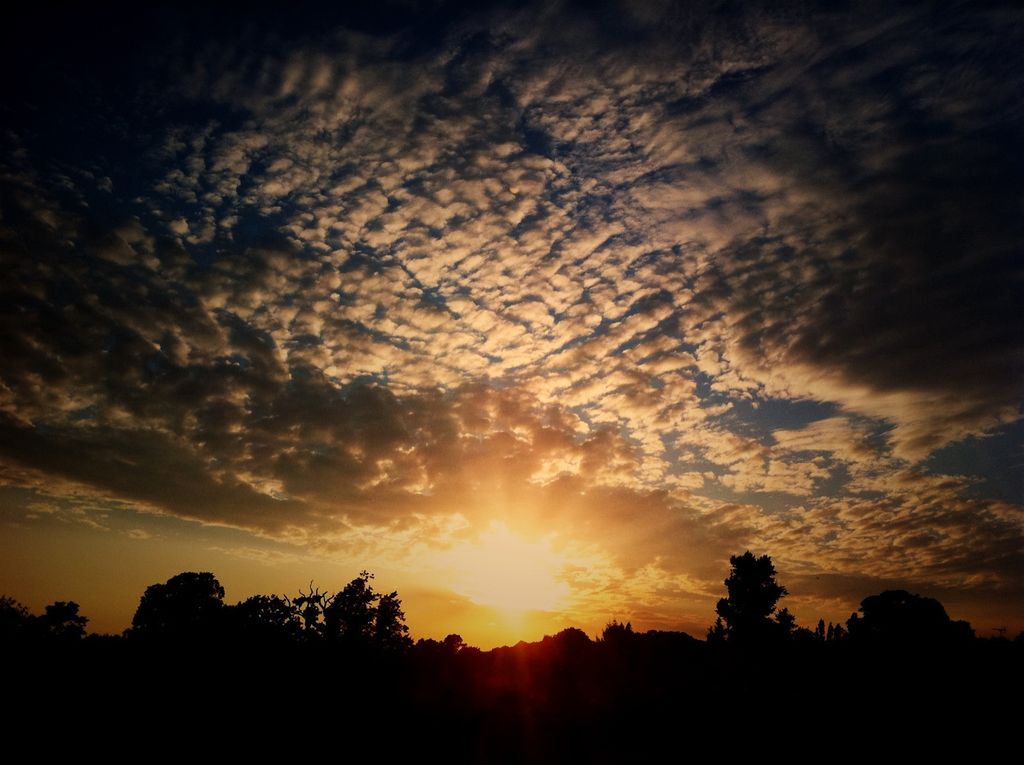Mysterious Noctilucent Clouds, floating high above the Earth in the realm of space, may be observed right from your own backyard. Learn the ins and outs here.
Noctilucent Clouds, commonly known as NLCs, are a light show occurring at the uppermost edge of our atmosphere, approximately 76-85km high when conditions are just right. These ethereal swirls and tendrils, often shimmering blue-white, appear long after sunset and are a sight to behold during those twilight summer evenings. The name translates to 'night shining' due to their unique illumination by the Sun even as it sets below the horizon for us on the ground.
But these clouds are not permanent fixtures in the sky. They only form when the stars align, so to speak, and their appearance is somewhat unpredictable. Typically, they happen during summer months, primarily between May and August in the Northern Hemisphere. And because they are meteorological marvels, their formation requires a delicate combination of conditions that not all nights provide.
If you've ever gazed up at the sky only to be disappointed by faint mammatus clouds lingering over the landscape, you're not alone. Yet, the fleeting beauty of noctilucent clouds sometimes makes such encounters a frustrating encore. However, the charm lies in their elusive nature – they are a celestial treasure waiting for those with patient eyes to uncover.
When the stars align and noctilucent clouds make themselves known, they offer an enticing distraction from other night sky spectacles, such as the Andromeda Galaxy's dust lanes or the Orion Nebula's star-speckled heart. A surprising and dazzling display can be so captivating that it overshadows the allure of even the most breathtaking galaxies or nebulae.
So, if you're eager to catch a glimpse of these night-shining wonders, here's how:
Finding Noctilucent Clouds
Locating noctilucent clouds is straightforward and cost-effective – no fancy telescopes or high-tech equipment are required. All you really need is a good pair of eyes and perhaps a pair of binoculars to see fascinating details that are invisible to the naked eye. You can observe them from the comfort of your own backyard or bedroom window, as long as you have a clear view north.
A display may appear between 30 to 120 minutes after sunset or before sunrise. Typical appearances stretch from northwest, through north, and low above the northeast horizon where they may be visible before sunrise. However, predicting noctilucent clouds with accuracy more than a few hours in advance is not possible due to their specific and brief formations.
In the past, stargazers were left hoping for an appearance on every clear summer's night. Now, with the help of modern technology, noctilucent cloud enthusiasts track satellite images, monitor atmospheric data, and use online resources to increase their chances of catching a dazzling display. And, of course, social media serves as a virtual town square where NLC hunters share their observations and offer alerts when a spectacular display is happening.
Preparing for a Noctilucent Cloud Display
If you wish to witness a noctilucent cloud display, wait until sunset, enter a clear night, bundle up, and venture outside with your binoculars and camera. Ideally, you'll want a clear view north, and the lower, flatter, and less obscured your northern horizon, the better your chances will be.
Then, it's simply a waiting game. If the clouds appear, they will likely begin as faint streaks of gold-white low in the northern sky. If you're fortunate, these streaks will brighten and lengthen, transforming into a breathtaking electric blue arch or intricate swirls extending to the east and west.
Patience is crucial, as displays can fade and return, offering opportunities for extended viewing. So, if you're lucky enough to catch a glimpse of these mesmerizing clouds, don't be surprised if you find yourself lost in their ethereal dance long after the sun has risen.
Sources:1. Noctilucent Clouds: The Exhilarating Nighttime Show by J. Kelly Beatty2. Noctilucent Clouds: Observational Guide by Birgit Freyhammer and Alexandre Chapoval3. The Physics of Noctilucent Clouds: Exploring Nature's Light Show in the Sky by Andrew Z. Smith4. Imaging Noctilucent Clouds: Techniques and Analysis by Ralf Tape and Kazuyuki Aikawa5. Noctilucent Clouds: Current Status and Future Prospects edited by T. C. Caballero and P. R. Coleman
- Noctilucent Clouds, or NLCs, offer an alluring distraction from traditional astrophotography wonders such as galaxies and nebulae, with their dazzling blue-white swirls and tendrils shining in the night sky.
- To experience these ethereal clouds, patients eyes and maybe a pair of binoculars are all you need, making observation accessible to environmental-science enthusiasts regardless of their resources.
- With modern technology, data-and-cloud-computing tools, and online resources, the probability of witnessing a noctilucent cloud display has significantly increased, allowing amateur astronomers to track and predict their occurrence.
- Despite climate-change impacting weather patterns, causing uncertainty, noctilucent clouds have been observed predominantly during summer months, primarily between May and August in the Northern Hemisphere.
- It is advisable to venture outside with your binoculars and camera after sunset, preferably in a clear night with a low, flat, and less-obscured northern horizon for an improved chance of viewing these night-shining marvels.
- As light pollution can hinder the visibility of noctilucent clouds, stargazers might find themselves waiting in darker, more remote locations for the right conditions to reveal these transient and delicate formations.
- Much like the aurora, these natural light shows remind us of the unending dance between science, technology, and the environment, proving that even in the face of global challenges, the beauty and mysteries of our universe continue to captivate us.




